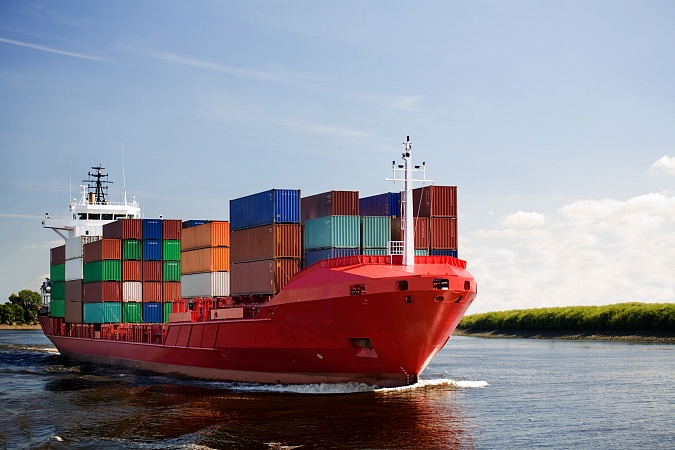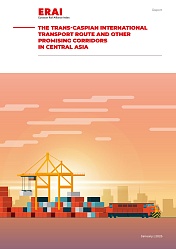Digital forwarder Shifl says a significant drop last month in China-US ocean freight spot prices being paid by some freight forwarders has been maintained, with the firm confident rates will drop further after lunar New Year, although other sources say overall spot prices have remained very high.
Although the various ocean freight industry pricing indices report a mixed picture in terms of spot prices, which remain hugely inflated compared with pre-pandemic rates, Shifl said its experience indicated that «the relief that some shippers had from the drop in China-US spot rate market in the first week of October 2021 seems to be continuing into November 2021».
While overall average spot market pricing appears to have remained high, there seems to have been an opportunity for some forwarders to source space at discounted rates in recent weeks, as non-vessel-operating common carriers (NVOCCs) that had booked space in advance had been left with unsold capacity due to the recent production cuts in China caused by power outages. Shifl said the level of co-loading of cargo had declined in recent weeks and unsold transpacific space had been sold last-minute to freight forwarders at a discount.
Last-minute discounts
It reported that with Chinese manufacturers «throttling production due to the power crisis and the off-season coming into view, competition for freight capacity in terms of containers and vessel space has fallen off», with some co-loaders that «took advantage of the price increases and congestion by buying up capacity now looking to unload it as quickly as possible».
These factors led Shifl to report that China-US container spot freight rates fell sharply in early October with rates for shipping a 40 ft container from China to Los Angeles dropping from a high of $17,500 to $8,500 — a drop of more than 50% compared to September 2021. For China-US East Coast shipping, rates dropped by 28.2% in the space of one month, down to $14,000 per container by early October from a high of $19,500 in September.
Shabsie Levy, CEO and founder of Shifl, said those lower pricing levels had been broadly maintained for freight fowarders into November, «with the holiday shopping rush seemingly over and the already ordered goods sitting inside thousands of containers on many ships across the USA». According to Shifl’s data, container spot rates for November 2021 on the China-US East Coast route are currently around $13,800 per container in November — a similar level to early October and down 29% from $19,500 in September 2021.
«Based on the current market conditions, I visualise a slight uptick in rates just before Chinese New Year,» said Levy. «After Chinese New Year, as we head into the traditionally quieter months, I’m confident we will see the rates on a stable downward trajectory.»
Falling rates expected from February
However, Shifl has warned that this temporary reprieve could soon be overshadowed by a growing backlog of unfulfilled orders, as Chinese energy rationing policies and the impact of COVID-19 shutdowns «throttle factory output, meaning that US and EU manufacturing orders are not being filled on time. While US and EU businesses scramble to diversify their supply chains, inventory shortages and price increases will become more pronounced.»
Levy noted: «For shippers with inventory still in China, access to capacity at lower rates is great news. But the big question now is whether or not there will be products to fill these containers.»
In terms of long-term rates, he said his company had been already seeing long-term rates for shipping 40-foot containers from China to the US go below $5,000.
Other rates sources differ
According to container rates digital specialist Xeneta and its Xeneta Shipping Index (XSI) short-term rates index, average prices last week were down by around 7% to US$8,409 per feu compared with their peak of just over US$9,000 on 1 October, although its figures exclude the priority loading surcharges that have become a major pricing factor in recent months. For Far East to north Europe, prices remain close to their historic highs at $13,869, down from a peak of $14,282 last week.
Digital booking platform and rates specialist Freightos, which includes a component for priority loading surcharges in its pricing, reported last week that although Asia-US West Coast rates are 9% below the mid-September peak-season high, prices climbed 16% last week to $18,730/FEU, although its Freightos Baltic Index (FBX) includes data for shipments from southeast Asia as well as northeast Asia or just China.
Judah Levine, head of research at Freightos noted: «Even with the height of peak season demand behind us, elevated or climbing rates may show that low inventory levels and still-elevated consumer demand for goods are keeping volumes high. Most acutely though, congestion at LA/Long Beach is also keeping pressure high during what is normally the lull between peak season and Lunar New Year.»
Port congestion persists
As highlighted in Lloyd’s Loading List, Sea-Intelligence estimates that worldwide, congested ports are sucking up 12% of global container capacity, effectively reducing supply while demand stays elevated.
«In LA/Long Beach, the current crisis is the lack of space in its container yards choked with loaded imports and empty containers. With no space, ships aren’t getting unloaded as fast as possible and trucks can’t return empty containers that are in turn filling area warehouses and occupying chassis badly needed to pick up imports,» Levine noted.
He highlighted that ports are rolling out several initiatives aimed at freeing up space, including a penalty on ocean carriers for containers that don’t get picked up on time that the port of LA said was reportedly already having an impact.
Large importers targeted
Although carriers will pass fines on to importers, and many importers are not intentionally leaving boxes unclaimed, Levine said it seems the targets are those very large whose containers are usually allowed extended time at the ports.
«With their own warehouses full with holiday goods, large retailers may be storing non-urgent containers at the ports. So, the fine is designed to push this group toward other storage options,» Levine noted.
«Also this week, the ports announced that some carriers will send dedicated ‘sweepers’, ships brought in just to remove empty containers from the yard, and that alternate nearby sites are going to be opened to hold imports and receive empty containers.»
‘Little change’
In his monthly analysis of the ocean freight market on behalf of the Baltic Exchange, Vespucci Maritime CEO Lars Jensen said little had changed last month, noting: «October 2021 was, to all intents and purposes, a month without major developments. This might seem like an odd statement as the market was highly out of line with the pre-pandemic normality and supply chain disruptions were hitting the headlines of not just the industry press but also the mainstream media. However, from a data-driven perspective the most apt description of October was that nothing materially changed compared to September.»
In terms of freight rates, he argued that «October did not bring much relief to shippers. The pattern varies slightly across trade lanes, but the overall development is quite well aligned.»
According to Jensen, the FBX rate index shows us that «on the transpacific, rates peaked in mid-September and then declined somewhat coming into October», although how we should interpret this was «a ‘glass half-full or half-empty’ situation».
Jensen added: «Rates to the US West Coast decline by some US$4,000/FFE, which on the surface appears as a major decline. But this still meant a rate of $16,000/FFE by mid-October and by end-October it had climbed back to almost $17,500/FFE. A similar development was seen to the US East Coast where a rate decline of $2,000/FFE only served to reduce the overall level to a still extremely high $20,000/FFE by the end of October.»
On Asia-Europe, he noted that rates went from $14,700/FFE to $14,200/FFE whereas rates to the Mediterranean once more reached a new record high by the end of October surpassing the previous peak in mid-September by $100.
«Basically, all quantifiable market data point in the same direction: The market has neither improved nor worsened in the past month,» said Jensen.
Forward-looking concerns
«Looking slightly forward, this is concerning. Usually October is a quiet month, mainly impacted by a seasonal lull driven by the Golden Week holiday in China. It appears that all this seasonal impact amounted to was to stall a development that had deteriorated sharply during the peak season.»
Jensen said «all eyes are now on Chinese New Year 2022», which happens on 1 February. «Traditionally this would lead to an expectation of strong volume developments throughout January. However, the extreme disruptions in the market combined with the lack of material improvement in October is highly likely to cause many shippers to fast-track their logistics requirements in order to have sufficient buffer in their supply chains,» Jensen added.
«This means we should expect a surge in cargo to begin during November and hence a significant likelihood of worsening problems and increasing rates.»
Poor schedule reliability
This all comes against a backdrop of a still highly disrupted global ocean freight supply chain in which global schedule reliability «remained at a level around 34% in September at the same level as seen in August, and the delays of the late vessels remained around a full week for the third consecutive month. These delays effectively remove vessel carrying capacity from the market. And for September this meant that 12% of the global fleet was effectively removed — the same as seen in August,» Jensen noted.
Jensen highlighted that vessel congestion outside key ports also continued thoughout last month, noting: «The largest pile-up of vessels waiting in queue is still outside the port complex of Los Angeles/Long Beach. By mid-September the number of waiting vessels reached 70. This declined slightly to the mid-50s in early parts of October only to start escalating again and by end-October the number was getting to 79 vessels waiting in line.»




